2019 Royal Ascot Handicappers Blog

Blue is King once more
In landing both Group 1 sprints at Royal Ascot Blue Point bookended the 2019 Royal Meeting with two stellar performances. Stewart Copeland expands on his win in the Diamond Jubilee in
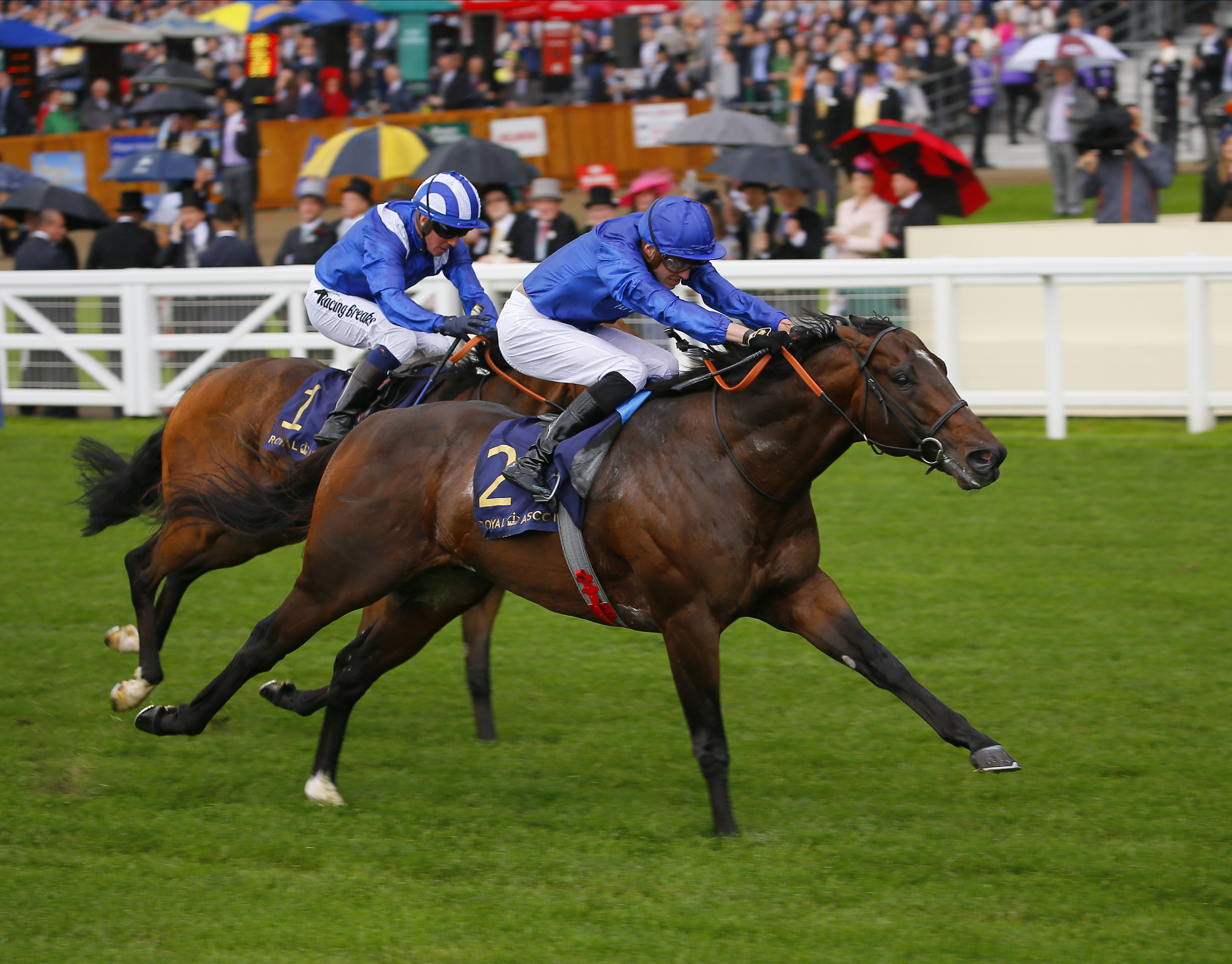
Blue Point and James Doyle take the Gr.1 King’s Stand Stakes
the next section, but firstly 5f handicapper Chris Nash assesses what he achieved in the King’s Stand…
The only 5f race open to older horses at the Royal meeting is the Group 1 King’s Stand Stakes. The first three from the 2018 renewal returned to do battle and they all but produced the same result. In 2018 Blue Point beat Battaash by one and three quarter lengths with a further neck back to Mabs Cross in third. This time around Blue Point again took the prize but on this occasion there was one and a quarter lengths back to Battaash in second, with a further one and a half lengths to Soldier’s Call in third. Mabs Cross was just a nose behind him in fourth.
The last ten winners of this race range from 113 to 125 (the stunning effort of Lady Aurelia in 2017 with her fillies allowance added back in) and the average winner comes out at 118. Applying race standards to the 2019 renewal suggests a figure between 117 and 119 for Blue Point. However, I’m happy to be plenty above that range as those figures are held back by a couple of moderate renewals in 2015 and 2016 where the winners (Goldream and Profitable) only recorded figures of 113. I’m sure that we are in a far better age of 5f sprinting at the minute.
I decided to rate Blue Point 123 which equates to a career best. This has Battaash running to 119, Soldier’s Call running to 114 (which matches his previous career best) and Mabs Cross running to 111 (a few pounds below her very best).
Blue Point went into the King’s Stand rated 120, 3 lb behind the 123-rated Battaash. However, given that Blue Point has now come out on top the last three times that they have met, that differential can no longer be supported. Some people might suggest that I’m slightly sitting on the fence in rating them both 123 after this race but I can’t pick the one that is the best. Battaash can be electric on his day and he looks best over a sharp 5f – if the pair met at (say) Goodwood I’d want him on my side. Stage the race at Ascot over a stiffer 5f and Blue Point would definitely appear to hold the aces.
Blue proves the point with rare double
When the phrase ‘go out on a high note’ was coined I’m not sure horse racing figured highly in the thinking but it could hardly be more apt for the career of Blue Point, writes Stewart Copeland. As I write this, news has broken that Blue Point has been retired, and he leaves the sport with many great memories for us all, not least his historic double at Royal Ascot last week.

Blue Point – James Doyle win the Gr.1 Diamond Jubilee Stakes
As I tweeted last week he became the first horse since Choisir in 2003 to land the King’s Stand and Diamond Jubilee double. – and his was arguably an even more notable achievement given the King’s Stand was a Group 2 back then. It’s hard to imagine any other horse winning two Group 1 races at the same track in the same week, but I’ll leave that research to the historians out there!
What I can say for certain is that Blue Point retires with four Group 1 wins on his record, including a hat-trick of successes on his last three starts. Arguably the pick of them is his performance in this year’s King’s Stand, as outlined above. The figure of 123 allocated to him for that win ranks him right up there with some of the best British-trained sprinters we’ve seen this millennium. Only Oasis Dream and Harry Angel, both on 125, have rated higher. Let’s hope this splendid racehorse has a long and productive retirement.
As for his performance in the Diamond Jubilee I have credited him with a performance rating of 120+. In analysing the race the early fractions were strong set by Kachy, and studying the sectionals, Blue Point arguably deserves extra credit for racing closest to the aforementioned trailblazer over a test which stretches his stamina to the limit. His performance in the King’s Stand already tells us that is merited. I wrote a good while back in this blog how sectionals would aid anyone in breaking down what happens in an individual race, and the information kindly supplied again by Longines at Royal Ascot proved an invaluable help.
To highlight this let’s look at the Wokingham alongside the Diamond Jubilee. When assessing the overall time and weights carried, the races produce an identical speed rating. However the races could hardly have been run more differently. Kachy covered the first 3f in 35.69 seconds, as opposed to Watchable (who set the strongest pace in the Wokingham) in 36.85. That’s a difference of 1.16s, or in simple terms Kachy was in the region of around 7 lengths quicker to the 3f pole than Watchable. Some difference!
No surprise then that the principals in the Diamond Jubilee finished notably slower than Cape Byron, winner of the Wokingham. He covered the last 2f in 23.89 seconds compared to Blue Point’s 24.46, which equates to around 3.5 lengths. In summary the gallop in the Wokingham was more even paced throughout, whereas the Diamond Jubilee was run at a frenetic early pace and the majority of the principals slowed notably towards the finish. The main exception was the runner-up Dream of Dreams, and that is simply explained by the fact that he came from off the pace, conserving more energy than the leaders in the early stages of the race.
The growing use of sectionals gives a fascinating insight into how the pace of a race has an impact on each individual in it, and the above just gives a brief insight into how they can shed more light on a race than just the overall time. Much more so in the end.
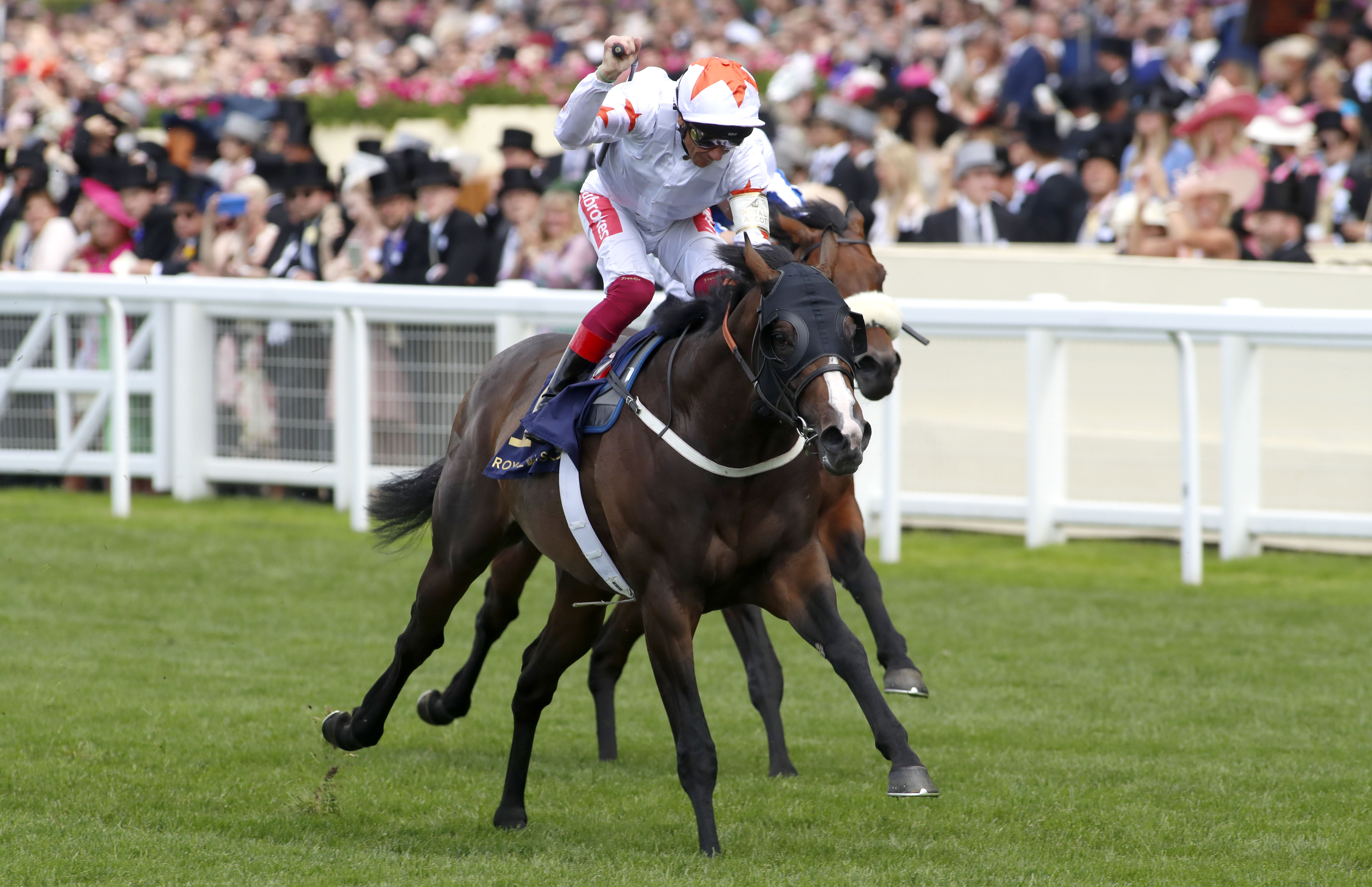
Advertise and Frankie Dettori winning The Commonwealth Cup
Back to the Diamond Jubilee. The standards for a Group 1 sprint in Britain point to figures in the region of 120/119 respectively for Blue Point and Dream of Dreams, a level which I’ve settled on at present. That represents a clear career-best for the latter who has always promised more and is now delivering. To put that performance into context, it is the highest rating allocated to the runner-up of a 6f Group 1 sprint in Britain since Choisir ran to 121 in the 2003 July Cup.
It would be remiss not to mention Kachy again, also. He did remarkably well to keep on for third given the early fractions he set, and a figure of 112 is as good as he’s run on turf. Arguably you could make a strong case for upgrading his performance based on sectional analysis, and there’s every chance he may well reproduce his all-weather rating of 115 on turf when speed is at a premium over 6f.
However, the older sprinters should face some serious competition in the July Cup in the shape of the three-year-old Advertise, the impressive winner of the 6f Group 1 Commonwealth Cup twenty-four hours earlier.
The race attracted the smallest field in its short history to date. However what it lacked in quantity it made up for in quality, with Ten Sovereigns and Jash, the first two home in the Middle Park, and Advertise, runner-up in the Dewhurst, all representing top class juvenile form.
Advertise soon put behind him a disappointing run in the 2000 Guineas with a clear cut length and a half win from the Irish challenger Forever in Dreams, with Hello Youmzain a further head behind in third.
Beforehand Advertise was rated 119 based on his Dewhurst second, and Hello Youmzain 114. Their performances here mirror that relationship perfectly. It also ties in well with the standard of 118/119 for the Commonwealth Cup, and given the race was run at a solid pace throughout and is backed up by an excellent time, it looks a fairly straightforward race to make sense of. Advertise and Dream of Dreams both look set for the July Cup, and it promises to be an exciting clash of the generations with little to choose between the main contenders.
Crystal Dazzles
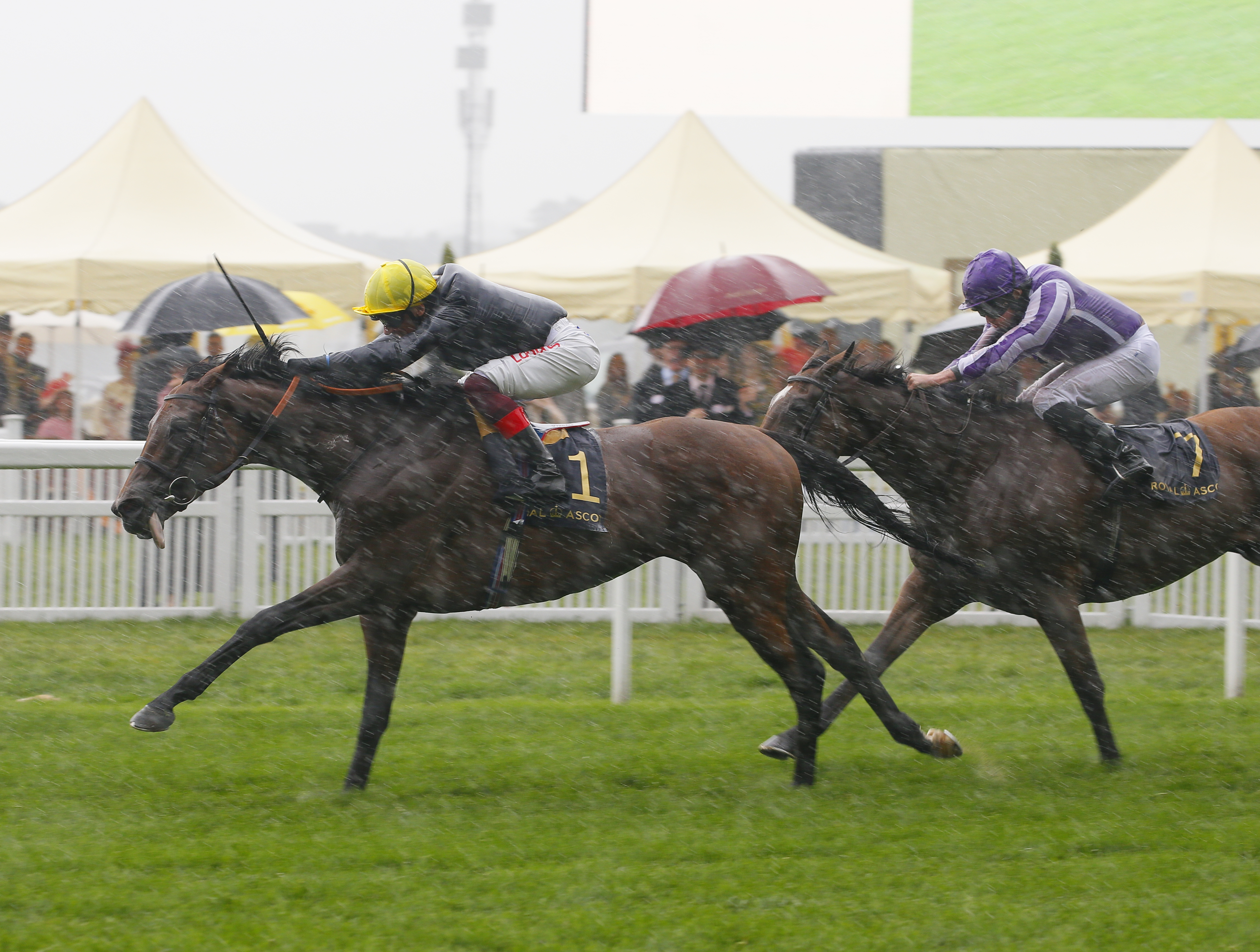
Crystal Ocean and Frankie Dettori winthe Gr.1 Prince Of Wales’s Stakes
From a ratings perspective the performance of not only the week but the season to date, was Crystal Ocean’s success in the Prince of Wales’s Stakes on Wednesday, writes Dominic Gardiner-Hill…
Runner-up Magical ended 2018 with a mark of 122 and nothing she had done in notching three straight wins this year prior to Ascot suggested that level was incorrect. In beating her fair and square I have Crystal Ocean running to 127, with French challenger Waldgeist 3 lb below his best at 119 in third – that no great surprise given that he has yet to reproduce his domestic level in five starts outside of France. The only slight question mark over the form is the relative closeness of the front-running Hunting Horn in fourth – he has never previously been higher than 114 but appears to have run to 115 on this occasion.
From a historical perspective the winning performance is at the top end – bettering Poet’s Word last year by a pound and being the highest rated in the last eight runnings.
Staying with the older horses, two old favourites fought out the finish of the Queen Anne on the opening day. Lord Glitters and Beat The Bank have no secrets from us from a handicapping perspective and I have them performing to 117 and 116, pretty much in line with their previous levels. That suggests One Master (third) was 1 lb below her best and Romanised (fourth) pretty much reproduced his 113 performance from the Lockinge.
The two feature races for three-year-olds over a mile were slightly less easy to rate with confidence.
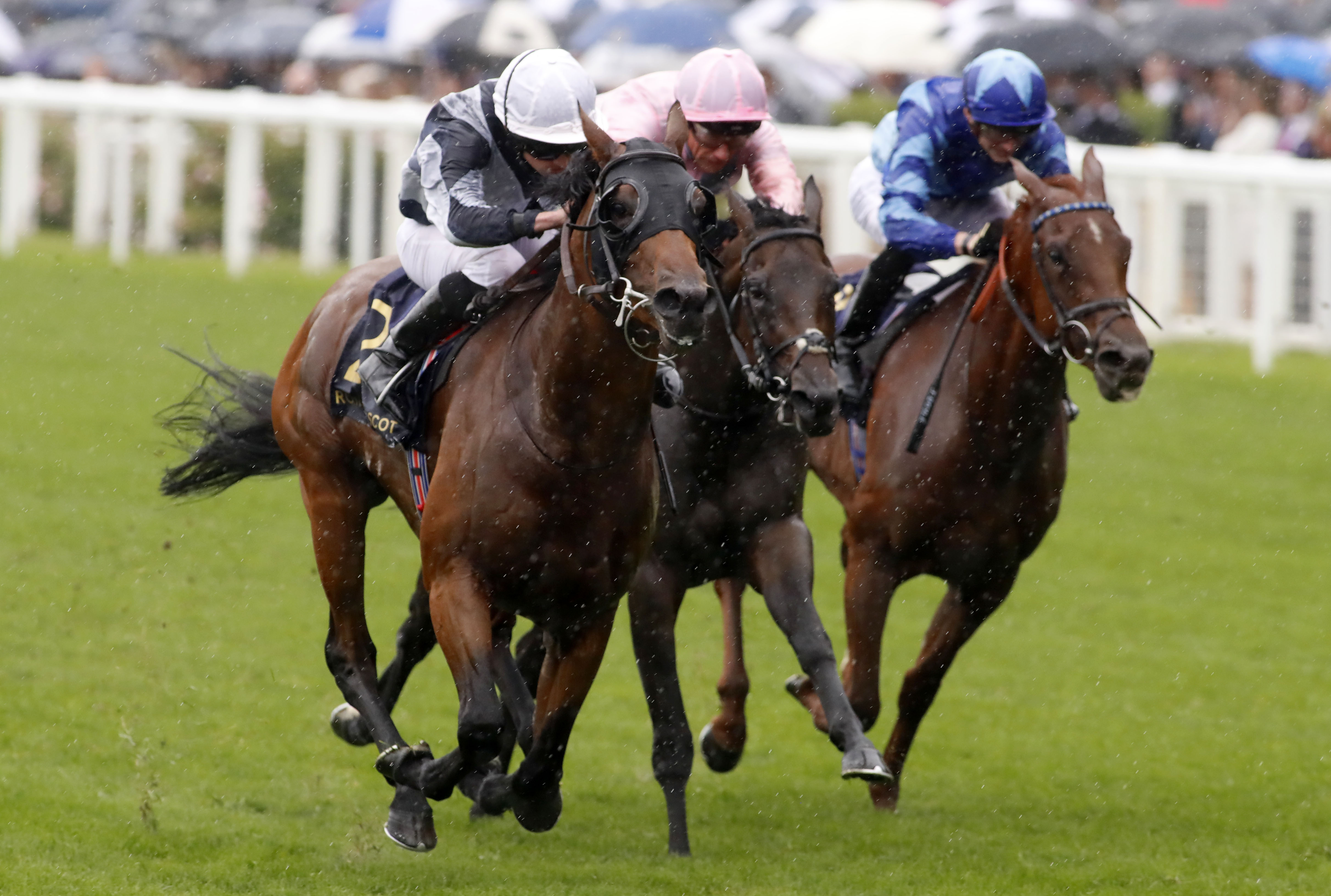
Circus Maximus and Ryan Moore winning The St James’s Palace Stakes
As far as the St James’s Palace is concerned, I have Circus Maximus returning a figure of 117. Currently that would have his performance 1 lb superior to that of Without Parole in the race last year but inferior to other recent winners Barney Roy (119), Galileo Gold (121), Gleneagles (118) and Kingman (126) – the level is subject to change going forward, however, as it is impossible to know with total confidence how good the three-year-olds are until they start pitching themselves against the older horses.
As far as last year’s champion juvenile Too Darn Hot is concerned, it now looks unlikely that he will return to the levels he showed then (126) – his three starts so far this year have all been in the mid-teens range and he is now published at the mark of 115 that I have him running to in the St James’s Palace.
The fillies equivalent of the St James’s Palace, the Coronation Stakes, threw up a 20-1 winner in French challenger Watch Me who, having had no luck in running in the Pouliches, looked a top-class filly here. She travelled well throughout and there was no obvious fluke about her defeat of Hermosa. I have her running to 116, a figure bettered only by Alpha Centauri (122 last year) and Winter (118 in 2017) in the race in recent years – it will be interesting to see how she fares should she take on the colts later in the season.
Batman reborn
A second Gold Cup success for Stradivarius invoked memories of a favourite childhood superhero for Matthew Tester…
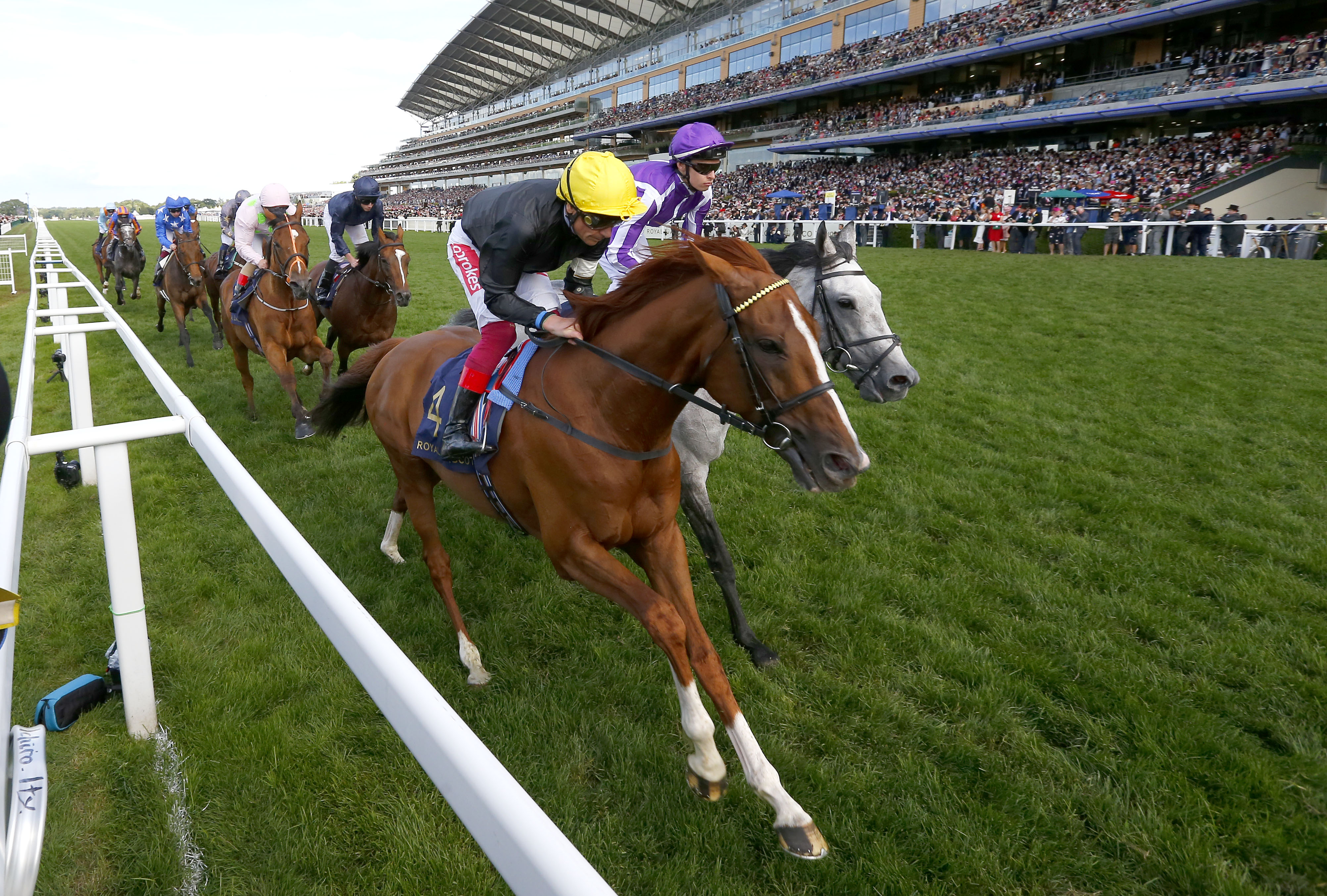
Stradivarius and Frankie Dettori win the Gold Cup
On TV when I was young, Batman was always getting into jeopardy; but there was always something in his utility belt that would get him out of trouble. A can of shark repelling spray was one memorable example.
Stradivarius is Batman reborn. Whatever the jeopardy, he has the solution. His latest Gold Cup win was on dead ground that is not meant to favour him. He was kept in a pocket by Capri on his outside when Frankie Dettori wanted to make a move. Not a problem for Stradivarius. He is a stayer with a burst of acceleration which he used to get out of the pocket. After that he always looked likely to triumph.
His win was by one length from Dee Ex Bee who had been rated 118 when runner-up to Masar in last year’s Derby. Less than a length further back in fourth was Cross Counter who came into the Gold Cup rated 118 after wins in the Melbourne Cup and the Dubai Gold Cup. Between them was the 108-rated Master Of Reality who had looked progressive hitherto, and the Irish Handicapper is happy to suggest he is now also worth a 118 rating.
Stradivarius stays on his pre-race rating of 120 but I suspect that, like Batman, he will come out victorious no matter what. He rarely wins by wide margins, but he keeps winning. He is the sort of horse for which we cannot find a justification on form for a higher rating even if we think that he would be capable of it. Sea The Stars was the perfect example of this. I am confident that Stradivarius can run to higher than 120 when needed. I just want to see what else he has in his utility belt.
Kicking in the tubo
The Coventry Stakes on day one is often considered the best of the six juvenile contests at Royal Ascot but this year the feature performance within the age group was saved until last, writes Graeme Smith.
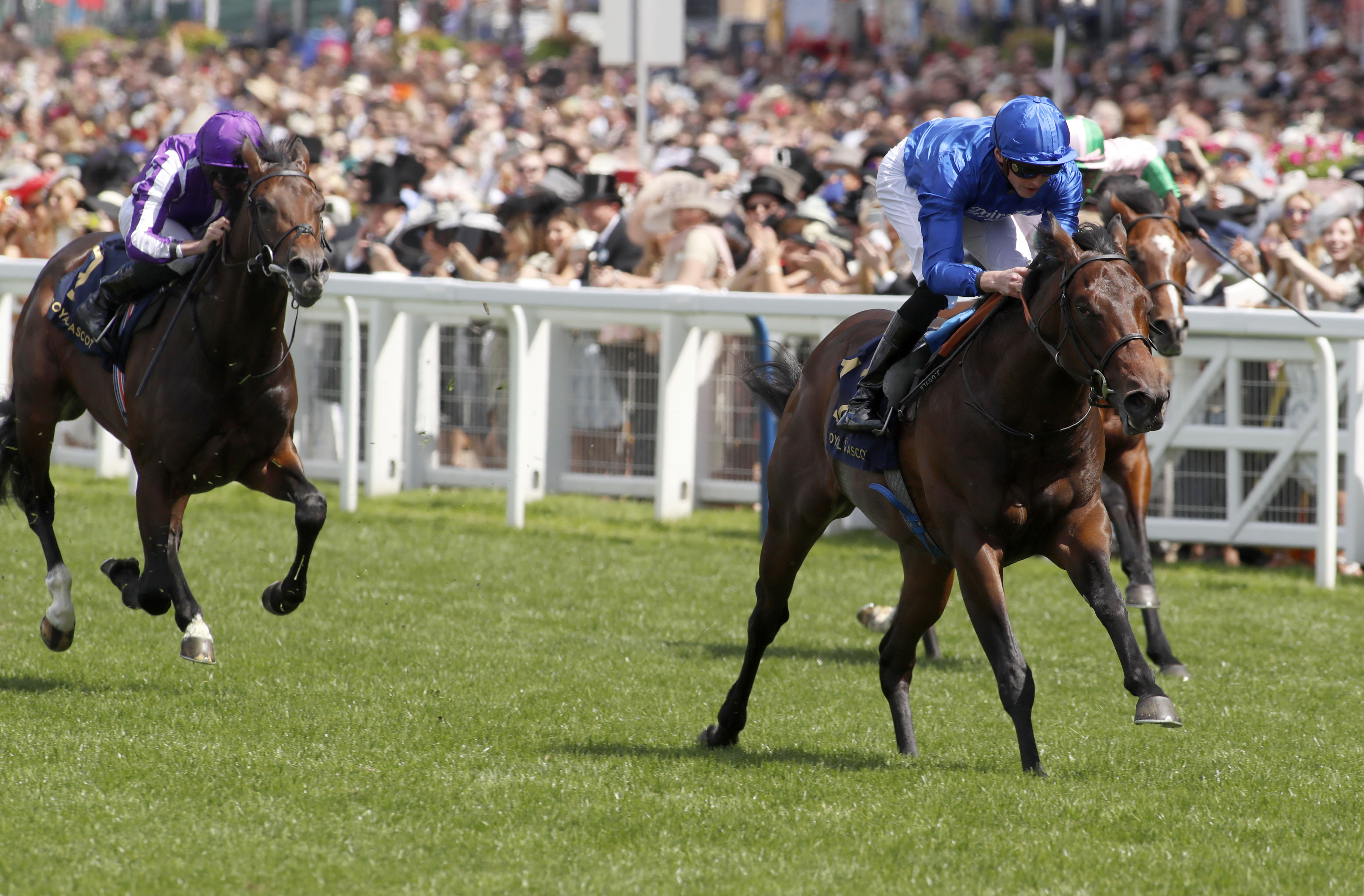
Pinatubo and James Doyle winning The Chesham Stakes
Pinatubo currently tops the list of juveniles in Europe at 110 following a Chesham success in which he lowered the two-year-old track record by no less than 0.82 seconds, which translates to nearly five lengths. That’s the headline, but those of us who take these things seriously will know that more important in terms of context is how the time stood up against other races under that day’s conditions – drying ground and tailwind – and again the answer was positive.
In a soundly-run race the match-up with the much-hyped Lope Y Fernandez duly materialized as the market leaders were played together approaching the final 1f, and Pinatubo ran right away from him to score by more than three lengths. The striking thing on the sectionals was that the other principals largely kept going through the last two furlongs but Pinatubo actually quickened off that pace, earning himself extra credit into the bargain. Lope Y Fernandez ran to 101 on my figures, although, as with all the Irish horses, a final decision on their handicap marks lies with my Irish counterpart.
The Coventry has a rich history of throwing up high-class horses but while the right ones came to the fore in terms of pre-race form and market expectations, it’s hard to escape the conclusion that this was a substandard renewal, in terms of what was achieved on the day at least. The lowest winning figure in the Coventry this century came courtesy of Rajasinghe in 2017 (107) when the first ten were covered by less than five lengths. This time it was less than four lengths, and that was a strong recommendation for going below the historical standard for the principals.
Speed figures were difficult to gauge in the early part of the week with heavy rain continually moving the goalposts, but Ascot’s electronic sectional timing data discredited any suggestion the busy finish had anything to do with a lack of pace.
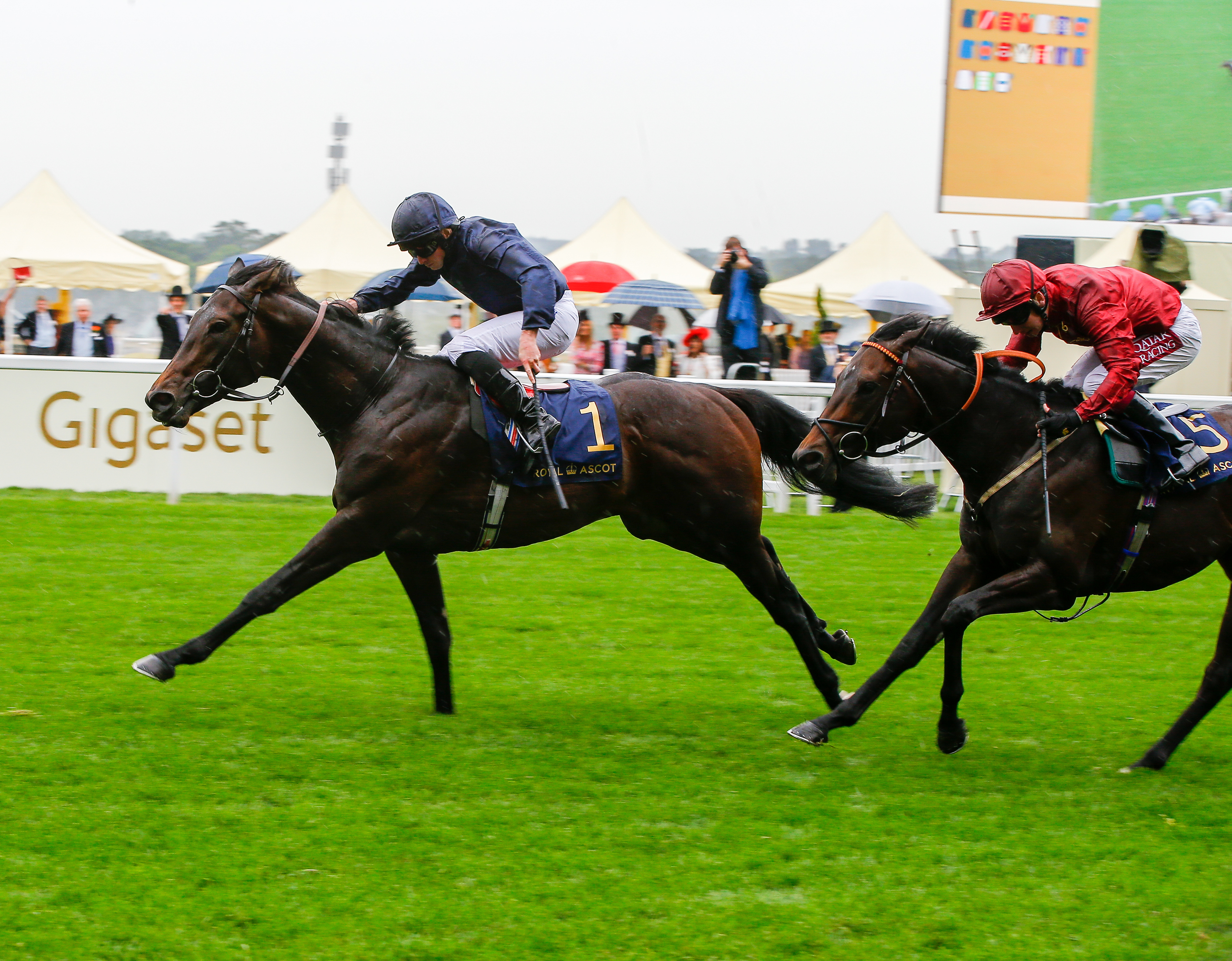
Arizona – Ryan Moore win the Gr.2 Coventry Stakes
It is of course early days in the development of these two-year-olds, and Arizona and Threat certainly have plenty to recommend them physically, but Arizona’s figure of 108 sits around 5 lb below the average Coventry winner this century.
Conversely, the front two in the Norfolk were well up to standard. A’Ali had gone into many a notebook when pushing Spartan Fighter into recording a very useful time at Ripon on his debut and his followers didn’t have to wait long to cash in. From a race where the first five were trained in Britain, A’Ali emerges with a performance figure of 108 (he needs to run again before he’s eligible for a handicap mark), while Ventura Rebel dispelled any suggestion he’d been flattered to pick off tiring rivals last time and goes in on 107.
The emphasis was on stamina at the trip in the Windsor Castle and a finish in which the first six were still covered by less than two lengths was always going to lead to a figure towards the low end historically. The winner Southern Hills ran to 101 on my figures and I’m not entirely convinced the finishing order will stand up if some of these meet again in the future.
The stand side became the place to be as Wednesday wore on and the first three home came from the three highest stalls. I’d been impressed by Symbolize on his debut at Salisbury – form that looks even better now with the runner-up Aroha having finished third in the Albany – and he’s one of several who could make a better fist of things another day. For what it’s worth he ran three metres further than the winner.
The better of the fillies’ races was almost certainly the Albany. Daahyeh had beaten the Queen Mary winner Raffle Prize by a length and three-quarters (5 lb) on their respective debuts at Newmarket last month and, leaning primarily on historical standards, that remains the difference between them.
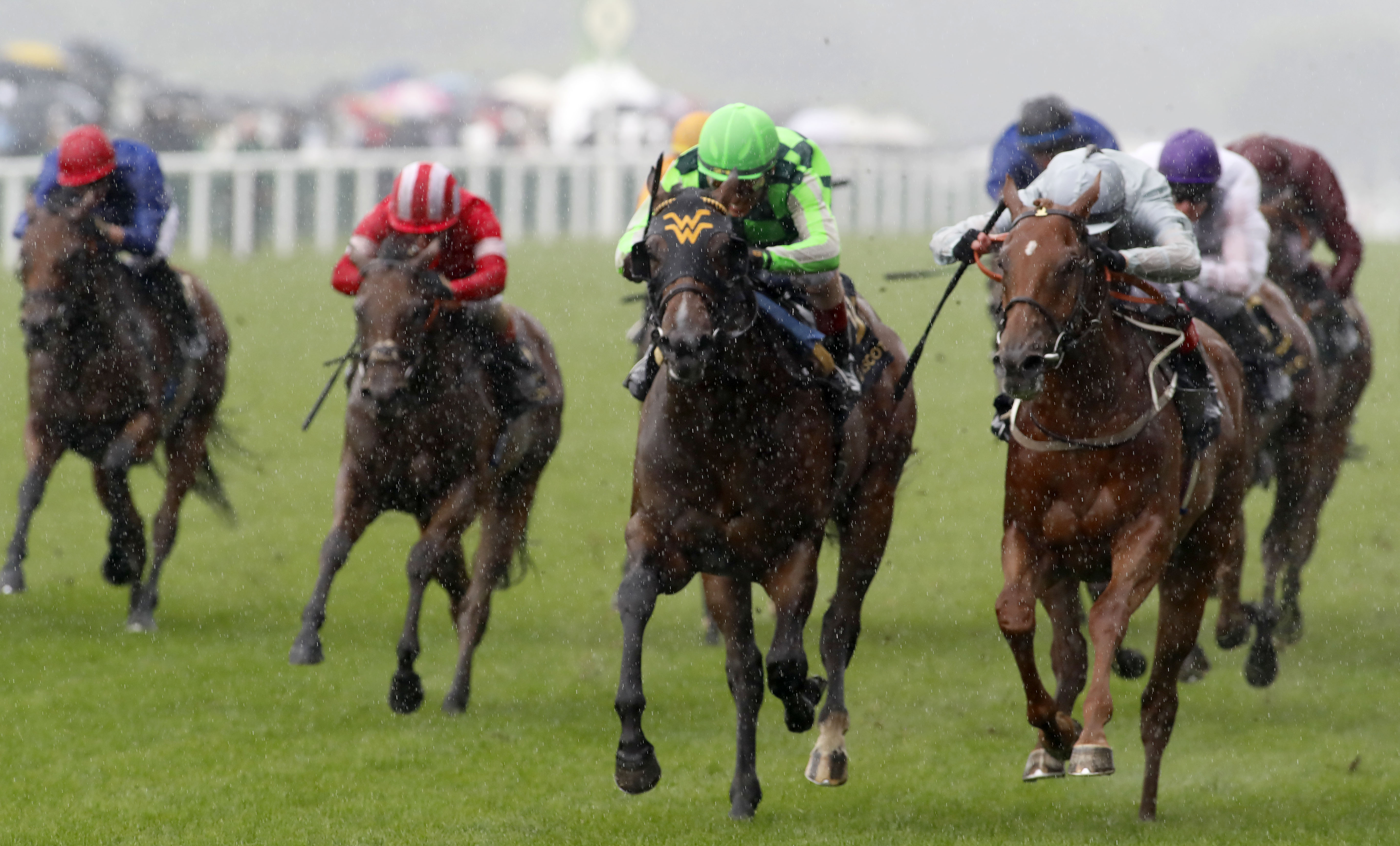
Raffle Prize and Frankie Dettori win the Queen Mary Stakes
Roger Varian’s filly looked in trouble as Celtic Beauty got to her travelling better and even edged past, but as that one fizzled out to run the slowest last furlong of any of the first four Daahyeh showed real fight to win with authority in the end. Time will obviously tell how Daahyeh’s 109 figure stands up, but that’s currently the benchmark in the fillies’ division.
Raffle Prize rather ruined the party for Wesley Ward after Kimari had ensured a proper test at the 5f trip of the Queen Mary in pursuit of a fourth win in the race for her stable. There was relatively little between the two fillies at the line but Raffle Prize was always getting the better of it through the last hundred yards and she emerges with a rating of 104. Raffle Prize is already proven at 6f and it may well be that a rematch with Daahyeh could be on the cards in something like the Duchess of Cambridge or the Lowther further into summer.
